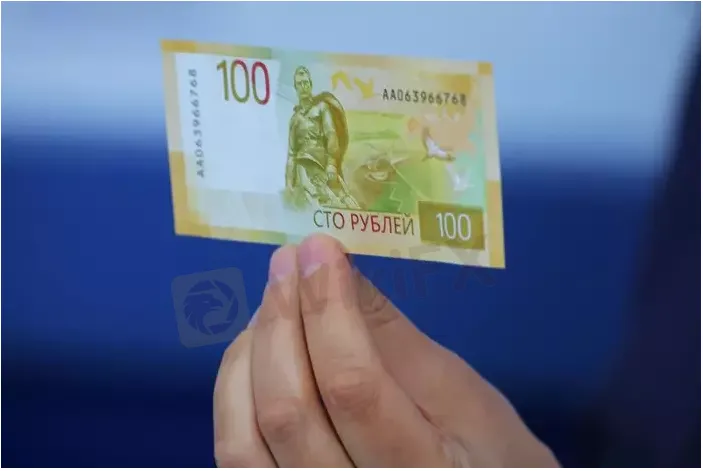简体中文
繁體中文
English
Pусский
日本語
ภาษาไทย
Tiếng Việt
Bahasa Indonesia
Español
हिन्दी
Filippiiniläinen
Français
Deutsch
Português
Türkçe
한국어
العربية
Rouble firms to 1-week high vs euro, Russian stocks climb
Abstract:The Russian rouble strengthened on Wednesday to a one-week high against the euro, boosted by upcoming tax payments that usually boost demand for the Russian currency, while stock indexes climbed higher.

The rouble is the worlds best-performing currency this year thanks to capital controls and is expected to find more support soon from month-end tax payments that usually prompt export-focused companies to convert part of their foreign currency revenues.
The rouble is likely to trade in the range of 60 to 62 against the dollar until exporters become more active in terms of tax payments, Promsvyazbank analysts said in a note.
Rouble volatility has declined recently after wild swings carried it to a record low of 121.53 against the dollar on the Moscow Exchange in March, days after Russia sent tens of thousands of troops into Ukraine on Feb. 24, before rallying in June to a seven-year peak of 50.01.
Trading curbs on Russian markets are gradually easing. Moscow Exchange has permitted investors from “friendly” jurisdictions, or those which had not imposed sanctions on Russia, to start trading on the derivatives market after an almost six-month hiatus.
That ruling does not apply to the main stock market, but since Monday, Moscow Exchange has allowed non-residents from “friendly” countries to trade bonds.
“A positive factor now is the fact that with the return of non-resident investors to the debt market, there was no selling overhang,” said Alfa Capital.
Russian stock indexes were climbing.
The dollar-denominated RTS index was up 1% to 1,153.1 points at its highest since late July. The rouble-based MOEX Russian index was 0.7% higher at 2,222.9 points, a more than five-week high.

Disclaimer:
The views in this article only represent the author's personal views, and do not constitute investment advice on this platform. This platform does not guarantee the accuracy, completeness and timeliness of the information in the article, and will not be liable for any loss caused by the use of or reliance on the information in the article.
Read more

How Macro Events Drive Energy Price Fluctuations and Their Linked Impact on the Global Forex Market
Macro Events shape energy prices and currency values in real time. - Currency swings alter oil production costs and supply, especially for countries with floating exchange rates. - Geopolitical tensions or policy shifts can spark volatility in both crude oil and forex markets. - Economic indicators like GDP growth and inflation quickly impact currency demand, which then affects global oil prices. These links reveal how market sentiment and uncertainty ripple across energy and forex markets.

“Wins with $19,916 weekly profit on Exnova”? There is something you should know.
Recently, a post on social media caught the attention of many traders — a supposed trader from Thailand allegedly made $19,916 in weekly profits on a trading platform called Exnova. While the claim sounds impressive and may spark curiosity among aspiring investors, it’s crucial to approach such statements with caution and understand the real facts behind the platform.

Oil Prices Slide After Cease-Fire
Oil markets tumbled on renewed geopolitical signals and market anxieties as both Brent crude and West Texas Intermediate (WTI) futures plunged over 5% following a fragile cease-fire agreement between Iran and Israel and a surprising comment from the U.S. President regarding Chinese imports of Iranian oil.

A Guide to RBI Forex Rules in India
To ensure transparency, the Reserve Bank of India (RBI), which regulates the country’s foreign exchange market, places certain rules on buying and selling currencies and other transactions.
WikiFX Broker
Latest News
FXTM: A Closer Look at Its Licences
Tiger Brokers Expands Hong Kong Operations to Tap Offshore Chinese Wealth
U.S. Treasury yields rise after Trump announces Israel-Iran ceasefire
Gold Prices Down in Early Hours of Spot Trading Today in India
Purple Trading Penalized €150,000 Over Compliance Failures in Cyprus
Asian chip stocks rise after Nvidia reclaims title of the world's most valuable company
Nvidia's comeback sparks a rally in Asian chip stocks
CNBC Daily Open: Despite all the uncertainty, the S&P 500 is flirting with record highs — strange times
PU Prime and AFA Announce Partnership at Madrid Event
The top private and public colleges for financial aid — 5 offer average scholarships of more than $50,000
Currency Calculator


